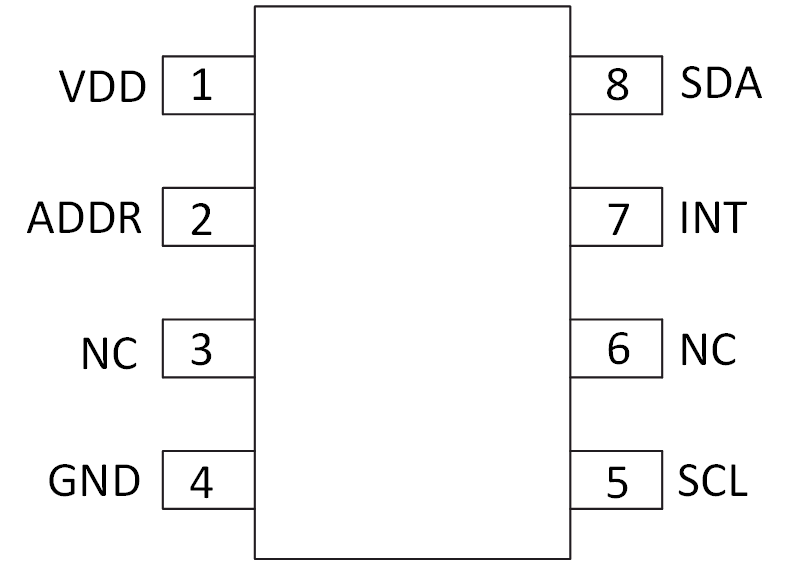JAJSOP2 December 2022 OPT3005
PRODUCTION DATA
- 1 特長
- 2 アプリケーション
- 3 概要
- 4 Revision History
- 5 概要 (続き)
- 6 Pin Configuration and Functions
- 7 Specifications
-
8 Detailed Description
- 8.1 Overview
- 8.2 Functional Block Diagram
- 8.3 Feature Description
- 8.4 Device Functional Modes
- 8.5 Programming
- 8.6
Register Maps
- 8.6.1
Internal Registers
- 8.6.1.1
Register Descriptions
- 8.6.1.1.1 Result Register (offset = 00h)
- 8.6.1.1.2 Configuration Register (offset = 01h) [reset = C810h]
- 8.6.1.1.3 Low-Limit Register (offset = 02h) [reset = C0000h]
- 8.6.1.1.4 High-Limit Register (offset = 03h) [reset = BFFFh]
- 8.6.1.1.5 Manufacturer ID Register (offset = 7Eh) [reset = 5449h]
- 8.6.1.1.6 Device ID Register (offset = 7Fh) [reset = 3001h]
- 8.6.1.1
Register Descriptions
- 8.6.1
Internal Registers
- 9 Application and Implementation
- 10Device and Documentation Support
- 11Mechanical, Packaging, and Orderable Information
6 Pin Configuration and Functions
 Figure 6-1 DTS
Package, 8-Pin SOT-5X3, Top View
Figure 6-1 DTS
Package, 8-Pin SOT-5X3, Top ViewTable 6-1 Pin
Functions
| PIN | TYPE | DESCRIPTION | |
|---|---|---|---|
| NO. | NAME | ||
| 1 | VDD | Power | Device power. Connect to a 1.6-V to 3.6-V supply. |
| 2 | ADDR | Digital input | Address pin. This pin sets the LSBs of the I2C address. |
| 3 | NC | No Connection | No Connection |
| 4 | GND | Power | Ground |
| 5 | SCL | Digital input | I2C clock. Connect with a 10-kΩ resistor to a 1.6-V to 5.5-V supply. |
| 6 | NC | No Connection | No Connection |
| 7 | INT | Digital output | Interrupt output open-drain. Connect with a 10-kΩ resistor to a 1.6-V to 5.5-V supply. |
| 8 | SDA | Digital I/O | I2C data. Connect with a 10-kΩ resistor to a 1.6-V to 5.5-V supply. |